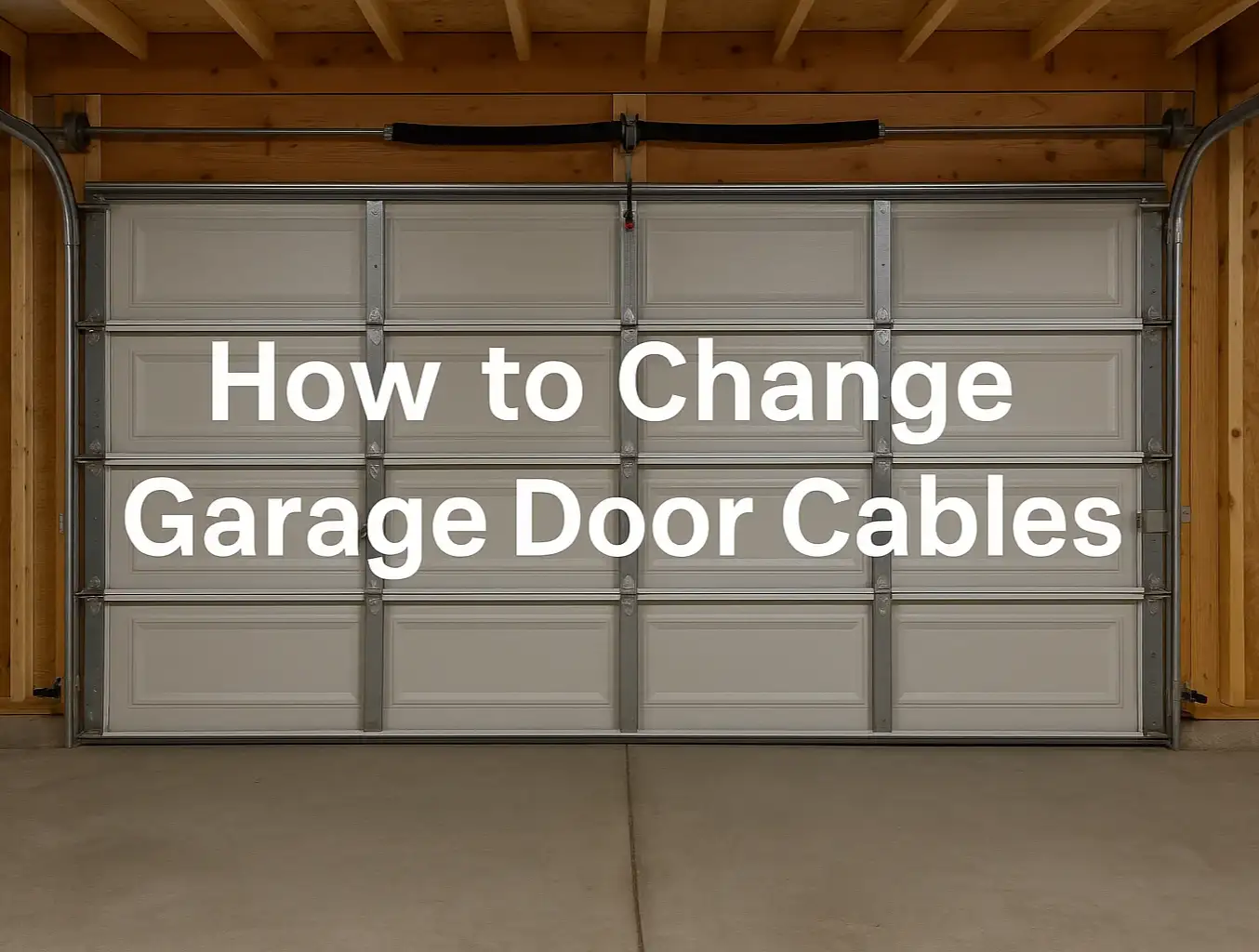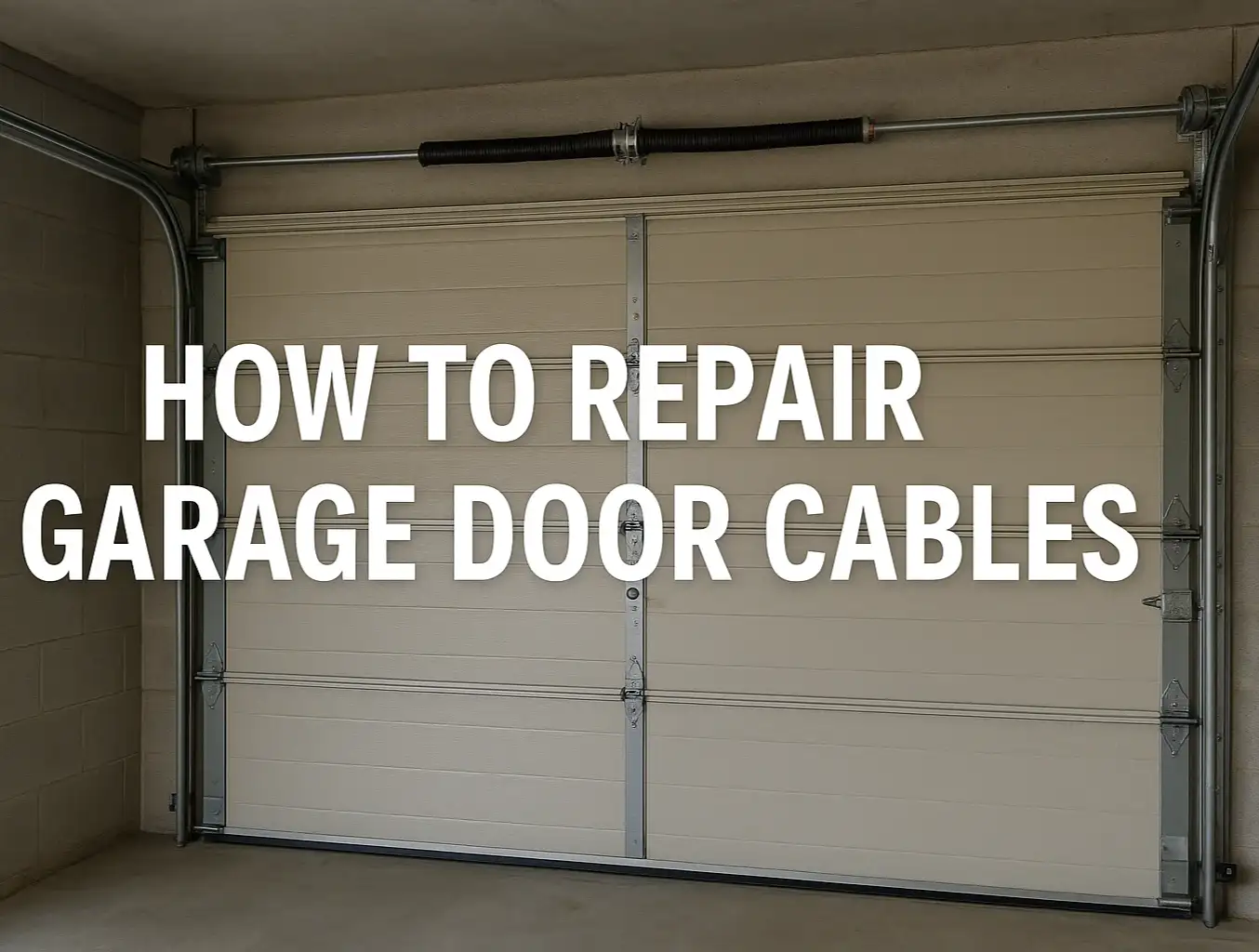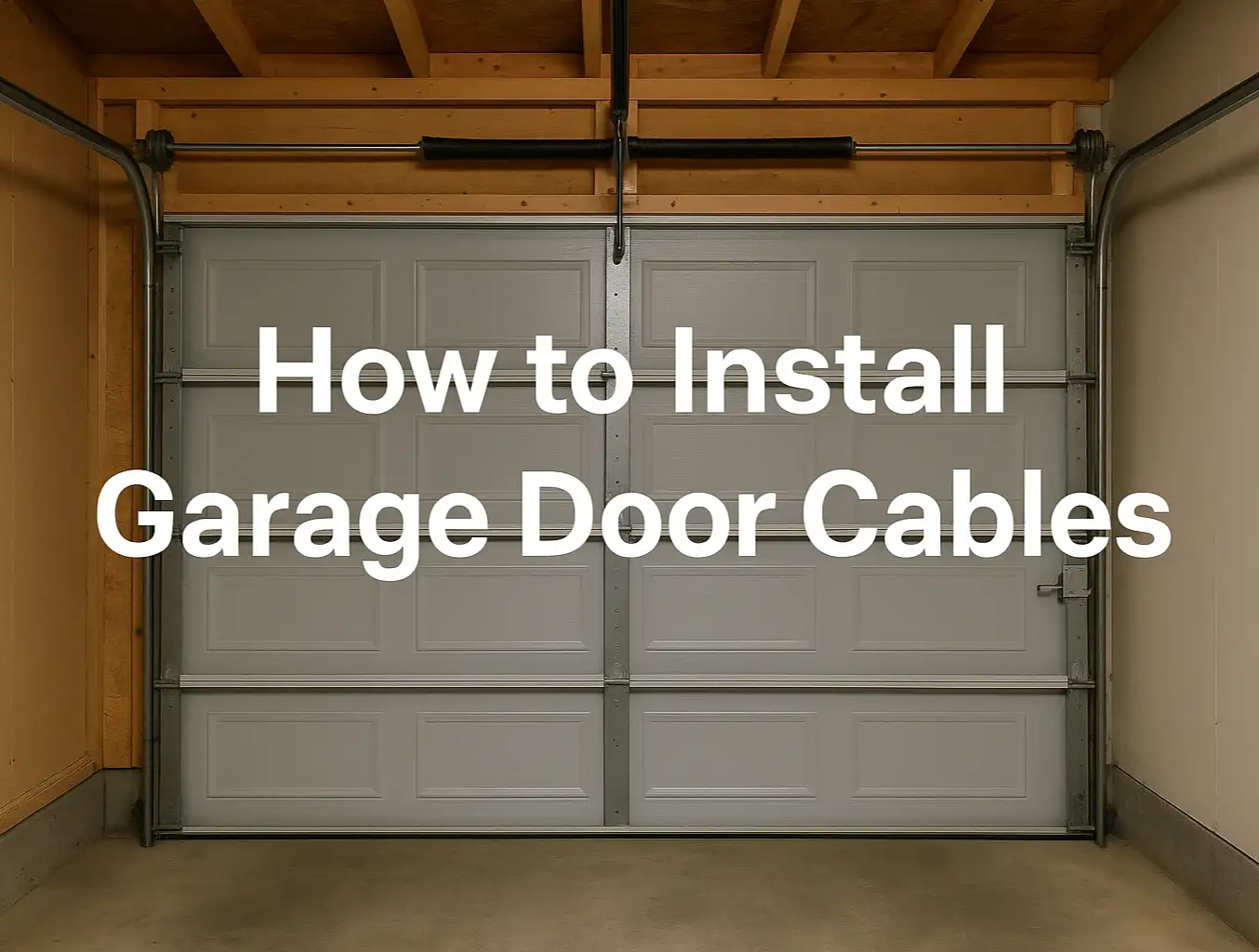How To Tighten Garage Door Cables: Safe Steps to Prevent Cable Failure
Published: Oct 22, 2025
A garage door that isn’t moving correctly is often a cable issue. The cables work with the springs to lift the door, and proper garage door cable tension is critical for safe, smooth operation. While it might seem like a simple fix, adjusting them yourself can be dangerous without the right training and tools. This guide from Up & Down Garage Doors breaks down the signs of a problem and explains the safe way to handle it, which almost always means calling a professional.
Signs of a Loose Garage Door Cable
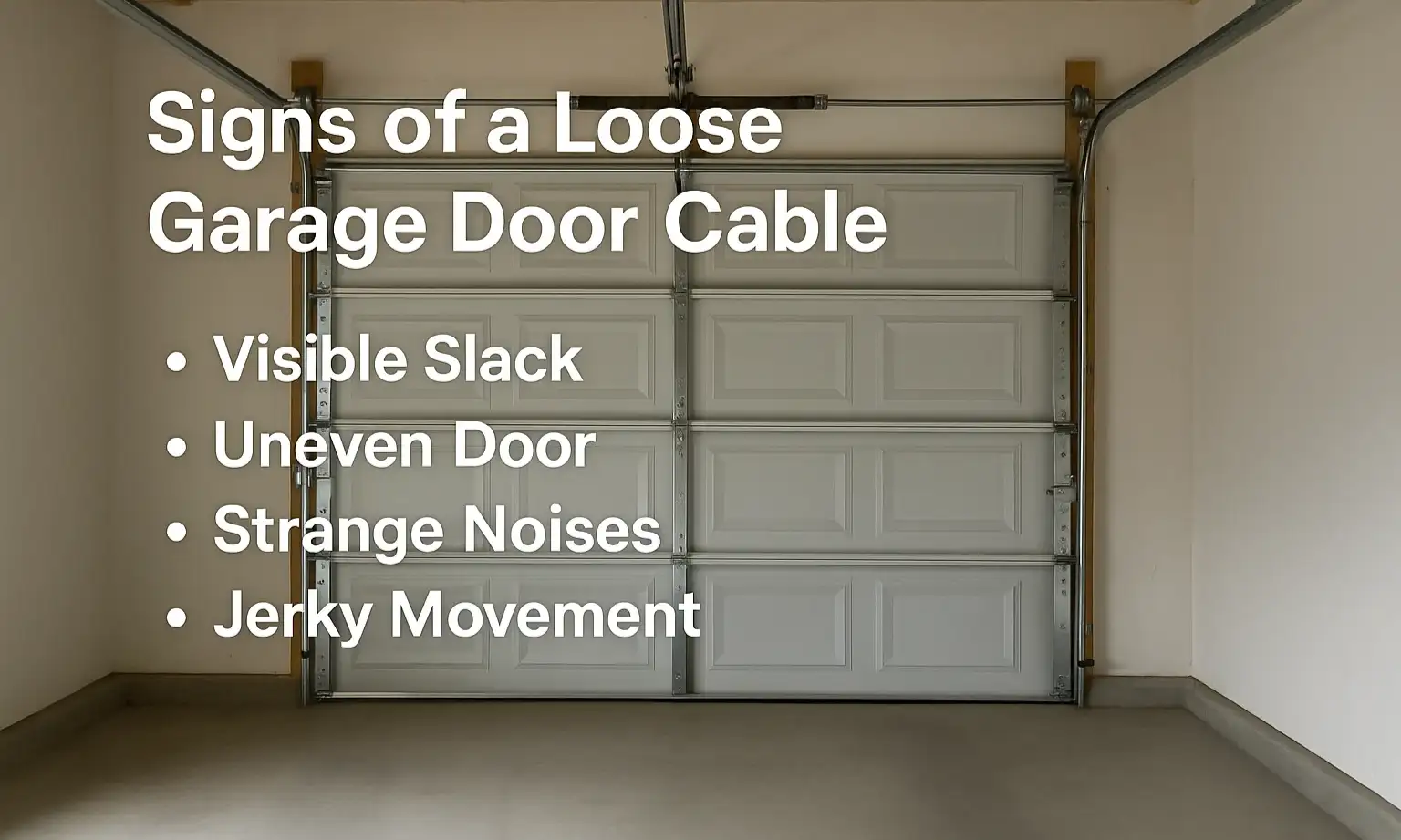
Before any adjustments are made, it’s important to know what you’re looking for. A cable issue will present clear warning signs:
- Visible Slack: You can see one or both cables hanging loosely when the door is closed.
- Uneven Door: The door appears tilted when opening or closing, a common symptom of a poor garage door balance.
- Strange Noises: Scraping or grinding sounds as the door moves could mean a cable has come off its drum.
- Jerky Movement: The door stutters or moves unevenly instead of smoothly, indicating an imbalance.
If the cable is frayed, damaged, or completely off the drum, it may be time for a full replacement. Here’s a safe guide on how to replace garage door cables.

Safety Precautions and Why DIY Is Risky
When you’re dealing with garage door cables, safety comes first. The system is under extreme tension from high-tension springs, which can cause serious injury if released suddenly. For anyone overseeing property management safety, avoiding this risk is essential. A single slip during a garage door cable adjustment can have severe consequences, which is why attempting to fix garage door cables is not a recommended DIY project. Professionals use specific tools and follow strict safety protocols that most homeowners do not have.
Step 1: Prepare for a Safe Adjustment
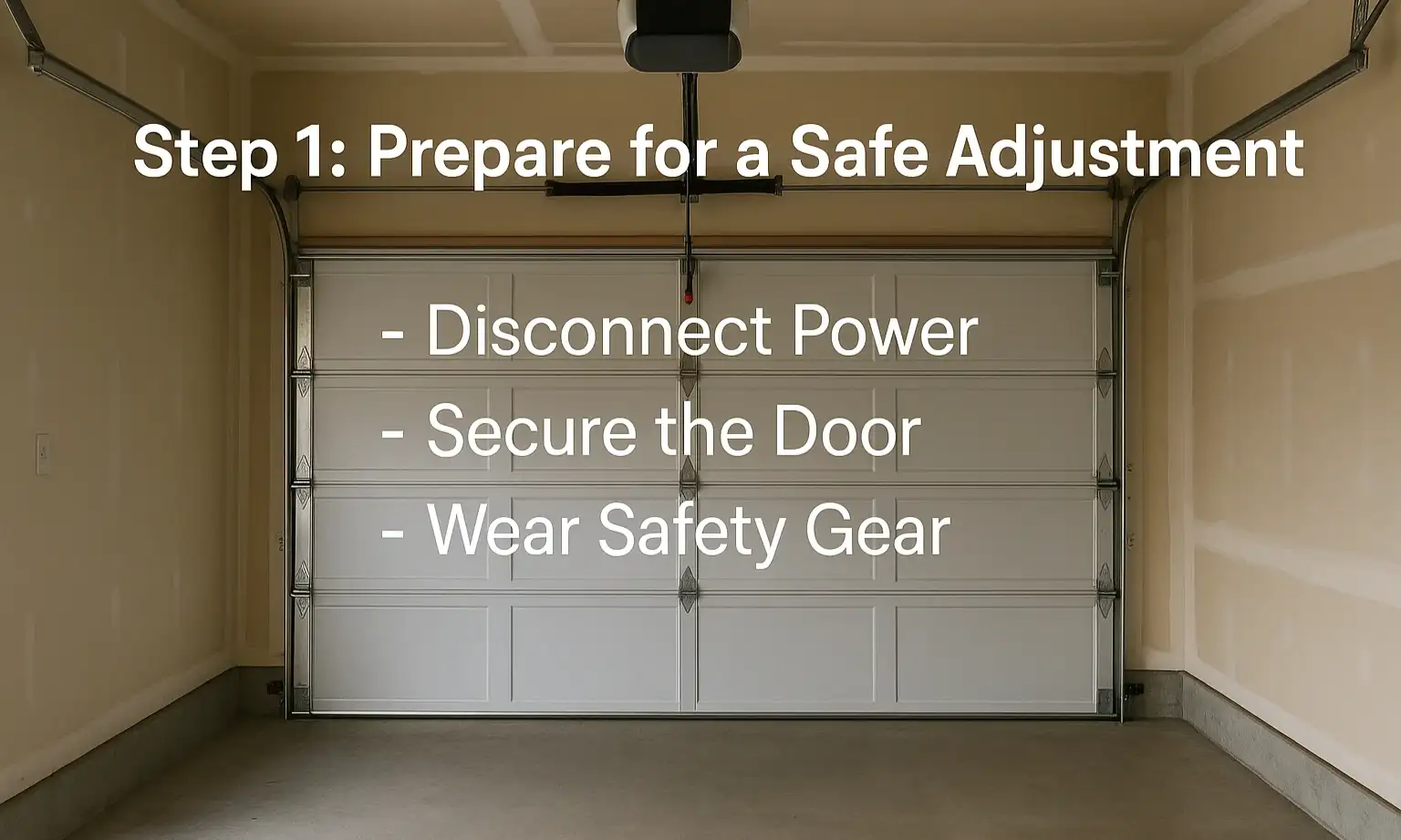
If you still choose to proceed, the first phase involves securing the area. A professional takes these specific steps to prevent accidents before any work begins.
- Disconnect Power: The automatic opener must be unplugged to ensure it cannot be activated accidentally during the repair.
- Secure the Door: The garage door is closed and then clamped firmly to the tracks with C-clamps or locking pliers. This prevents the door from moving unexpectedly once the spring tension is altered.
- Wear Safety Gear: Protective eyewear and gloves are necessary to guard against snapping parts or sharp edges.

Step 2: Adjust the Cable Tension
This is the most critical and hazardous part of the process, which is precisely why a professional garage door repair is recommended.
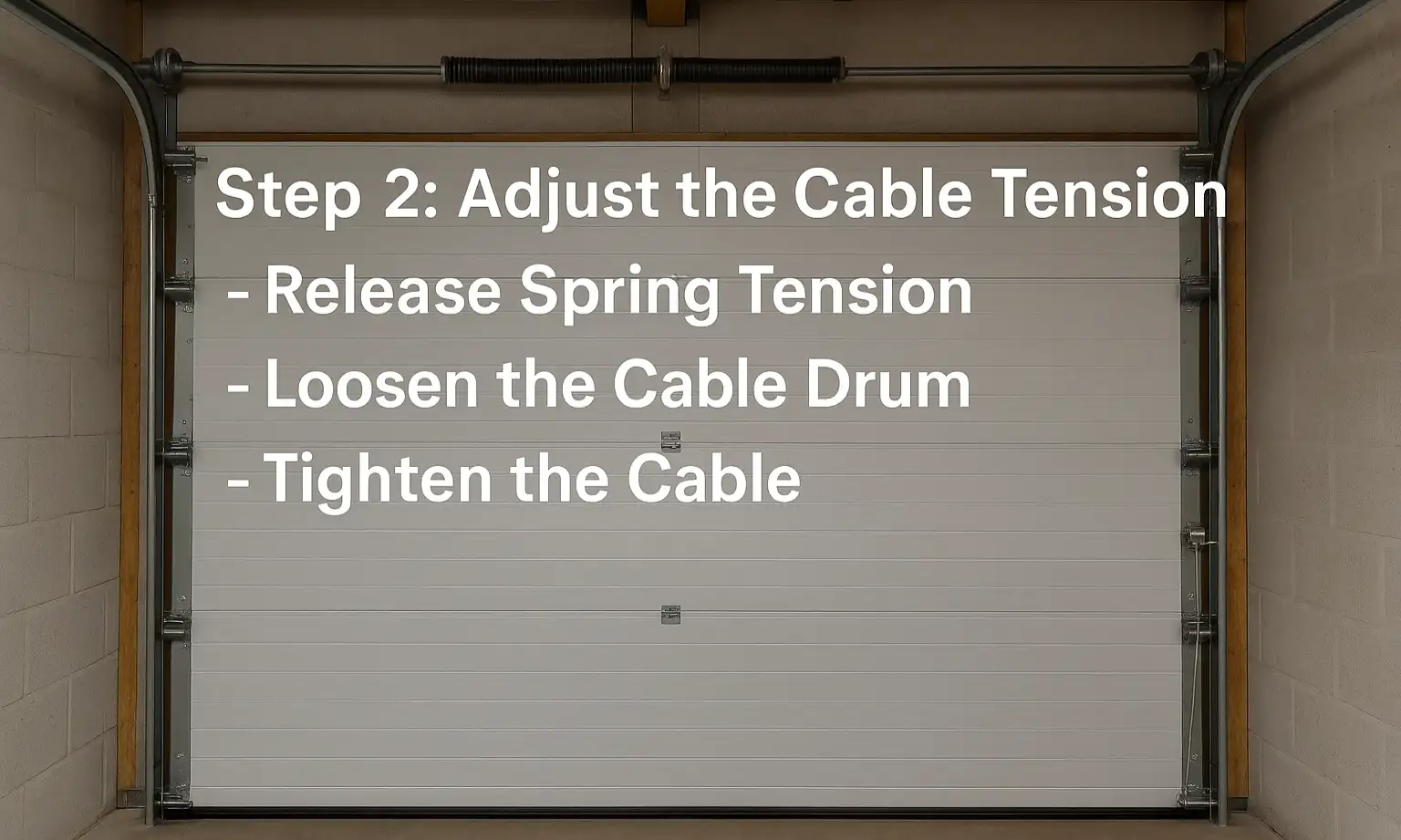
- Release Spring Tension: A technician uses specialized winding bars to carefully unwind the torsion springs, releasing the stored energy. This is extremely dangerous.
- Loosen the Cable Drum: Once the tension is gone, the set screws on the cable drum (the spool the cable winds onto) are loosened.
- Tighten the Cable: The technician pulls the cable taut to remove any slack and ensures it sits correctly in the drum’s grooves before retightening the set screws. This is repeated on the other side to ensure the garage door balance is even.

Final Steps and Testing
After the adjustments, the system must be carefully re-tensioned and tested to ensure it functions safely and smoothly.
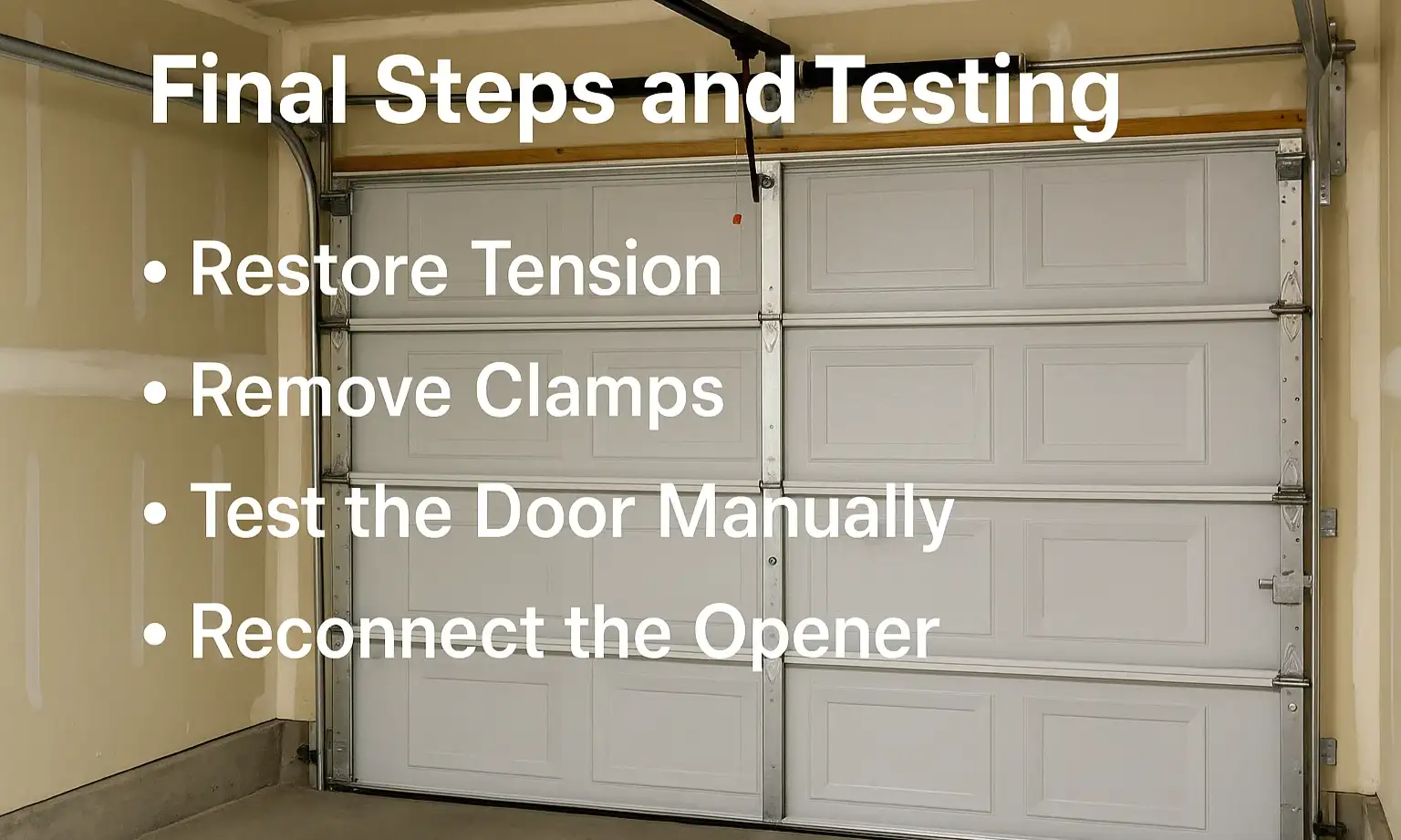
- Restore Tension: The technician uses the winding bars again to return the springs to the correct tension level.
- Remove Clamps: The C-clamps securing the door are removed.
- Test the Door Manually: The door is opened and closed by hand several times to check the balance and ensure it moves smoothly. This confirms the garage cable repair was successful.
- Reconnect the Opener: Finally, the automatic opener is plugged back in and tested. If new parts were needed, a professional knows exactly how to install garage door cables safely and securely.

For Safe and Reliable Repairs, Call Up & Down Garage Doors
A loose garage door cable is a clear sign that your system needs attention. While understanding the mechanics is helpful, the actual garage cable repair should be handled by an expert. If you notice any of the warning signs, especially a door that is significantly crooked or stuck, it’s time to call for help. Don’t risk your safety. The experienced team at Up & Down Garage Doors offers reliable garage door repair services. Whether you need a routine adjustment or an emergency garage door service, we have the tools and knowledge to fix garage door cables correctly and safely. Give us a call or fill out the form on our Contact Us page to schedule a repair or consultation.
Frequently Asked Questions (FAQ)
How to tighten garage door cables if one side is sagging more than the other?
This indicates a garage door balance issue. Never tighten just one side, as it can make the door dangerously misaligned. A professional garage door repair is needed to adjust both cables equally and restore proper tension.
What tools are needed to fix garage door cables?
Professionals use specific tools like winding bars, locking pliers, and wrenches to safely manage spring tension and adjust the cables. Using the wrong tools can be very dangerous.
How long do garage door cables last?
With regular maintenance, garage door cables can last for many years. However, they can wear out faster in environments with high humidity or frequent use.
Is a loose cable considered an emergency?
Yes, a loose or broken cable can be an urgent issue. It can cause the door to become stuck or fall, so calling for an emergency garage door service is a good idea.
